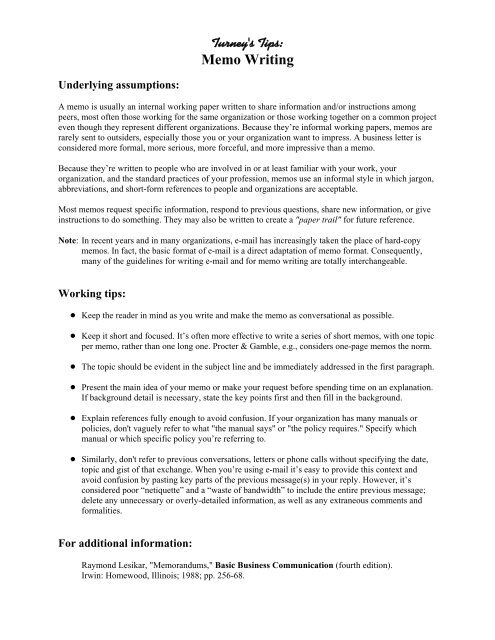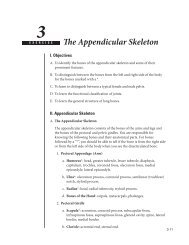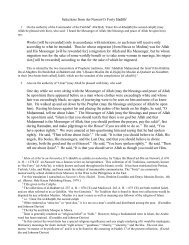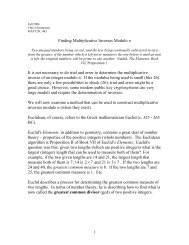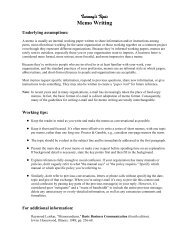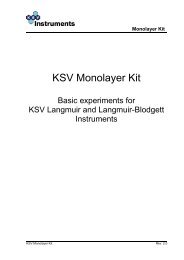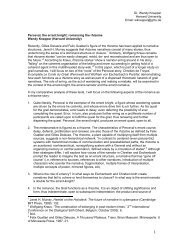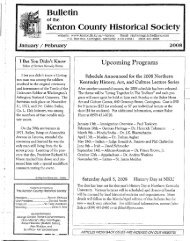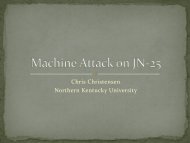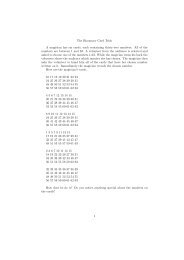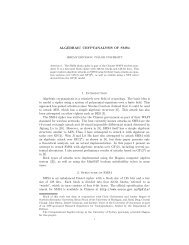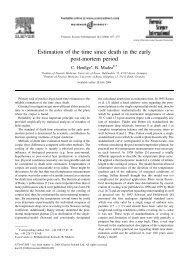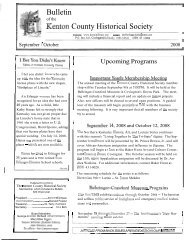Turney's Tips: Memo Writing
Turney's Tips: Memo Writing
Turney's Tips: Memo Writing
Create successful ePaper yourself
Turn your PDF publications into a flip-book with our unique Google optimized e-Paper software.
Underlying assumptions:<br />
<strong>Turney's</strong> <strong>Tips</strong>:<br />
<strong>Memo</strong> <strong>Writing</strong><br />
A memo is usually an internal working paper written to share information and/or instructions among<br />
peers, most often those working for the same organization or those working together on a common project<br />
even though they represent different organizations. Because they’re informal working papers, memos are<br />
rarely sent to outsiders, especially those you or your organization want to impress. A business letter is<br />
considered more formal, more serious, more forceful, and more impressive than a memo.<br />
Because they’re written to people who are involved in or at least familiar with your work, your<br />
organization, and the standard practices of your profession, memos use an informal style in which jargon,<br />
abbreviations, and short-form references to people and organizations are acceptable.<br />
Most memos request specific information, respond to previous questions, share new information, or give<br />
instructions to do something. They may also be written to create a "paper trail" for future reference.<br />
Note: In recent years and in many organizations, e-mail has increasingly taken the place of hard-copy<br />
memos. In fact, the basic format of e-mail is a direct adaptation of memo format. Consequently,<br />
many of the guidelines for writing e-mail and for memo writing are totally interchangeable.<br />
Working tips:<br />
! Keep the reader in mind as you write and make the memo as conversational as possible.<br />
! Keep it short and focused. It’s often more effective to write a series of short memos, with one topic<br />
per memo, rather than one long one. Procter & Gamble, e.g., considers one-page memos the norm.<br />
! The topic should be evident in the subject line and be immediately addressed in the first paragraph.<br />
! Present the main idea of your memo or make your request before spending time on an explanation.<br />
If background detail is necessary, state the key points first and then fill in the background.<br />
! Explain references fully enough to avoid confusion. If your organization has many manuals or<br />
policies, don't vaguely refer to what "the manual says" or "the policy requires." Specify which<br />
manual or which specific policy you’re referring to.<br />
! Similarly, don't refer to previous conversations, letters or phone calls without specifying the date,<br />
topic and gist of that exchange. When you’re using e-mail it’s easy to provide this context and<br />
avoid confusion by pasting key parts of the previous message(s) in your reply. However, it’s<br />
considered poor “netiquette” and a “waste of bandwidth” to include the entire previous message;<br />
delete any unnecessary or overly-detailed information, as well as any extraneous comments and<br />
formalities.<br />
For additional information:<br />
Raymond Lesikar, "<strong>Memo</strong>randums," Basic Business Communication (fourth edition).<br />
Irwin: Homewood, Illinois; 1988; pp. 256-68.
<strong>Memo</strong> format and set-up suggestions:<br />
If you work for an organization with pre-printed memo forms or a preferred format, use them. If not, the<br />
following format is among the most widely used, but there are lots of acceptable variations.<br />
TO: Name of addressee<br />
FROM: Michael L. Turney<br />
RE: Guidelines for memo writing<br />
September 9, 2003<br />
Text begins here, most often flush with the margin and not indented. The<br />
body of the memo is almost always single-spaced, but a blank line is left<br />
between paragraphs to insure their separation.<br />
- Some people like to center the work M E M O R A N D U M at the top of the page.<br />
- Some use a DATE: heading above the other headings or inserted between the FROM and RE lines.<br />
- SUBJ: or SUBJECT: are often used as an alternative on the RE line.<br />
Titles may be added on the same line and immediately after a person’s name or on the next line, indented<br />
to align with the start of the person’s name. The departments in which the TO and FROM people work<br />
may also be included on the line beneath their names.<br />
Traditionally, the writer initials or signs first name only—Full signatures are almost never used.—after or<br />
over their name on the FROM line of the original memo. Additional copies are usually left unsigned.<br />
Bottom notes, if needed, are added under the body of the memo and aligned with the left margin.<br />
MLT:rjm<br />
cc: D. Jones<br />
Enclosure: LS-2 Operating Manual<br />
- Initials and capitalization identify a secretary and the type of help provided in preparing the memo.<br />
If the initials MLT match the name on the FROM line, MLT:rjm, for instance, means MLT dictated<br />
a memo that rjm typed; RJM/MLT means RJM wrote it for MLT.<br />
- cc: (meaning carbon copies) or c: (copies) followed by names identifies people whose names aren't<br />
listed in the TO line who are also being sent copies of the memo.<br />
- Enclosures: or Attachments: are reminders meant to insure that the recipient gets everything<br />
promised in the body of the memo.<br />
[1.03]


